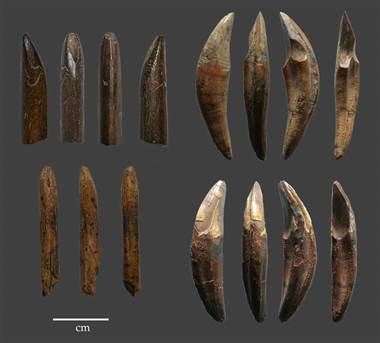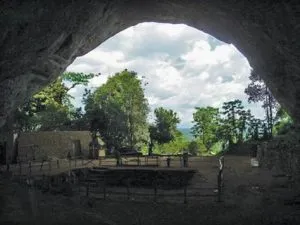Ancient Humans Living in the Rainforest Hunted Monkeys and Squirrels
After analyzing nearly 15,000 animal remains in Sri Lanka, scientists found humans used carved stone and bone fragments to hunt small game
/https://tf-cmsv2-smithsonianmag-media.s3.amazonaws.com/filer/88/e1/88e1faa4-a0df-4413-b848-3e8e89b372bd/istock-1077333866.jpg)
Early humans were capable of hunting small mammals like monkeys and squirrels for food, a new study in Nature Communications shows. Using remains from Sri Lanka’s oldest archaeological site, researchers were able to ascertain that humans from 40,000 years ago used small weapons to become sustainable hunters, reports Virginia Morell for Science.
The behaviors required to hunt small game are more complex than what humans from this era were previously believed to be capable of, reports Ashley Strickland for CNN. Researchers knew humans migrating across Africa could hunt larger prey, as evidenced by remains from coastal and savannah regions, but rainforests had been considered a barrier to human migration due to their lack of big game.
But, it would seem, early humans adapted to their surroundings and learned to hunt small mammals using sharp rocks and the bones from previous kills, Science reports. While the functions of small stone tools and carved bone shards discovered in the cave aren’t certain, scientists speculate they were used in arrows, darts or spears, reports Ruby Prosser Scully for New Scientist.
These small mammal populations would have been susceptible to overhunting, New Scientist reports, so early humans had to be smart and sustainable in their hunting practices, making sure to target the largest adult animals that would provide the most meat.
“They hunted these animals for nearly 40,000 years, without driving any to extinction, so they must have had sophisticated knowledge of monkey life cycles and an understanding of how to use resources wisely,” study co-author Patrick Roberts told Science.
Researchers derived this new information from studying roughly 14,500 bone and tooth fragments from Sri Lanka’s Fa Hien Cave, according to Science. Of the animal remains, 70 percent were of tree squirrels and monkeys like macaques and purple-faced langurs, Science reports. The cut and burn marks on many of the bones indicate humans butchered the animals for their meat. Four sets of human remains were also found at the site, including one female, one child and at least two infants, CNN reports.
The new findings are a testament to the resourcefulness of early humans and their ability to survive in a range of environments, CNN reports. Previously, humans were only thought to hunt small game in times of climate crisis, such as the Ice Age. But the dating of this evidence shows humans improved their hunting skills almost 20,000 years before the great freeze hit.
"This shows our species was able to diversify in varied settings all around the world,” Roberts told CNN. “And it might be this that made our species more successful than other hominin species, like Neanderthals and Denisovans, and really allowed us to survive and be the last hominin standing on the face of the planet."
/https://tf-cmsv2-smithsonianmag-media.s3.amazonaws.com/accounts/headshot/jane.png)


/https://tf-cmsv2-smithsonianmag-media.s3.amazonaws.com/accounts/headshot/jane.png)